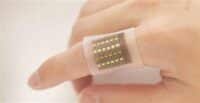The “ejecta” from the space rock expelled by the collision was enough to fill six or seven rail cars and altered Dimorphos’ orbit by about 33 minutes as well, revealed new research presented during the American Geophysical Union’s Fall Meeting in Chicago.
Nasa scientists estimated the momentum transfer from Dart’s roughly 22,530 km/h collision. Newly available data showed Dart’s momentum transferred on to Dimorphos when it impacted the asteroid.
The American space agency made history in September by slamming a spacecraft into an asteroid, making it the first time humans have altered the course of a heavenly body.
Dart, or Double Asteroid Redirection Test, was launched in November 2021 and spent months traveling to target Dimorphos – a companion asteroid of the larger Didymos – that was traveling through space at a distance of about 6.8 million miles from Earth.
The space agency hoped to find out if a spacecraft like Dart could divert asteroids threatening Earth in the future and provide a chance against potentially deadly impacts of the kind that once wiped out the dinosaurs.
The research assessed the ejecta to better understand how slamming a spacecraft on life-threatening asteroids could work as a planetary defense technique.
Scientists used new data on the composition of Dimorphos and the characteristics of the ejecta, gained from telescope observations and images from Dart’s ride-along Light Italian CubeSat for Imaging of Asteroids (LICIACube) contributed by the Italian Space Agency (ASI).
The #DARTMission investigation team discussed early results from DART’s impact at #AGU22, revealing that the spacecraft altered Dimorphos' orbit by ~33 mins & displaced over 2 millions lbs of rock into space – enough to fill 6 or 7 rail cars.
Learn more: https://t.co/7TPbZJjj84 pic.twitter.com/p3wTQHROfJ
— NASA Asteroid Watch (@AsteroidWatch) December 15, 2022
Based on the data, scientists could learn how much Dart’s initial hit moved the asteroid and how much came from the recoil.
“We know the initial experiment worked. Now we can start to apply this knowledge. Studying the ejecta made in the kinetic impact – all of it derived from Dimorphos – is a key way of gaining further insights into the nature of its surface,” said Andy Rivkin, Dart investigation team co-lead at the Johns Hopkins Applied Physics Lab (APL).
The research also revealed that Dimorphos and Didymos have a similar makeup and are composed of the same material.
Scientists said predicting the momentum transfer would be central to planning a future kinetic impact mission, including estimating the size of the impactor spacecraft.
It would also help determine the amount of lead time that would be needed to ensure that a small deflection would move a potentially dangerous asteroid off its path in the future, Nasa said.
In the new analysis, the space agency found the momentum transfer onto Dart was roughly 3.6 times greater than if the asteroid had simply absorbed the spacecraft and produced no ejecta at all, indicating the ejecta contributed to moving the asteroid more than the spacecraft did.
“Momentum transfer is one of the most important things we can measure, because it is information we would need to develop an impactor mission to divert a threating asteroid,” said Andy Cheng, Dart investigation team lead from Johns Hopkins APL.
“Understanding how a spacecraft impact will change an asteroid’s momentum is key to designing a mitigation strategy for a planetary defense scenario,” he added.




GIPHY App Key not set. Please check settings